- Thelonious Monk’s Harmony, Rhythm, and pianism (Part 3)
- Read Part 1 here and Part 2 here.
- Rhythm and Pianism
- Rhythm
- Pianism
- Analysis of Two Peers
- Find and download Thelonious Monk’s sheet music transcriptions in our Library.
- Thelonious Monk With John Coltrane (1961) (Full Album)
Thelonious Monk’s Harmony, Rhythm, and pianism (Part 3)
Read Part 1 here and Part 2 here.
Rhythm and Pianism
Rhythm
The rhythmic traits for which jazz is known and at which it excels—groove, swing, speed, heat, cool, polyrhythm, conversational interaction among players, dense and irregular improvised motives and phrases, antiphonal call and response, and more—are all but absent in ISC. Most modern jazz group performance emphasizes strict periodicity with terrific forward momentum created by players’ rhythmically propulsive contributions. Formidable mastery, poise, and virtuosity are needed to play.
Tempi are characteristically either fast enough to scare off would-be pretenders, or, just as daringly, cooled off to an unruffled “ballad” speed, and steady in either case. The metric backbone is the succession of harmonies with the beat usually actualized and propelled by the walking quarter notes of the bass and the drums’ “ride” cymbal. Though harmonies change on measure downbeats and sometimes middles, the beats in between—beats and in a four-beat measure—are stressed to create a driving backbeat.
Solo performances and recordings are almost exclusively the provenance of pianists, who could use the left hand to simulate the roles of the rhythm section, with either walking bass lines or the evocation of earlier styles such as stride or boogie-woogie. Monk himself made extensive use of these latter techniques on his own solo records, as well as on the unaccompanied numbers that were generally included in his live sets. Solo performers such as Art Tatum would also “extemporize,” straying from steady time in introductions, quasi-cadenzas, and so on. For Monk, though, a solo ballad like ISC was an opportunity to stretch time in a far more radical manner, eschewing steady time almost completely.
Swing, an idiomatic variation of the timing of the subdivided beat, depends on underlying regularity. It involves a dynamic relationship between measured periodicity and the realm of unmeasured music, rhythmic freedom that can be implied through soloists’ styles. This dynamism in turn references a melodic vernacular—the sense that a soloist is “speaking through their horn.” Some would argue that this has to do with the lyricism of the human voice, others that it represents some kind of middle ground between a discursive, rhetorical European way of making music and a more interactive, poly-rhythmic African approach. Others might say that both are true or that it simply feels good, and that, having been discovered and developed at the turn of the twentieth century, it proved irresistible.
Monk’s ISC can be said to swing only in the colloquial sense of being compellingly musical, that is, simply because he is saying something in a distinctive way. But strictly understood, swing can exist only against a conception of steady time, and in this recording nothing keeps time.
Except fleetingly in a few spots, it is impossible to move the body in any regular pulsation to Monk’s playing. He is clearly not keeping steady time internally—or else he has a very different clock. If we listen intently for the regularity most bodies crave—and which we expect from familiarity with more standard versions of the song—we must jolt in and out of time with him. The slow regular beat of the tune’s harmonic progression remains impassively present, a law both obeyed and mocked. Monk often played solo ballads in this manner, a meditation with outbursts, with an affect both reverent and ironic. In live performance with a group, this number would be surrounded by tunes that swung hard. In other words ISC’s rubato is heard—and is meant to be heard—in terms of the absence of jazz’s most authentic rhythmic traits, and of Monk’s abandonment of them in the service of other qualities.
Pianism
One of the most ergonomic inventions in human history, the piano and its eighty-eight-key action are among jazz’s essential European legacies. Its technology has empowered musical cultures as distant as Burmese and African American to adapt it to their own idioms, extending out from the panoply of European approaches to the instrument on completely unforeseen trajectories. Jazz piano’s trajectories crisscross and meld into a great tradition of their own.
No one gains entrance into the pantheon of jazz pianism without a strongly identifiable voice on the instrument. The differences among pianists are bread and butter to jazz lovers, from earlier era virtuosi like Jelly Roll Morton, James P. Johnson, Fats Waller, Earl Hines, and Art Tatum through beboppers like Bud Powell and Mary Lou Williams and on to a diversity of post-bop players far too numerous to cite or describe. But, as we have said, even among these names Monk comes in at a different angle due to a tightly bound combination of pianistic idiosyncrasies, harmony, and rhythm.
Yet we cannot properly appreciate these elements outside the context of what his peers developed for the instrument.
Keyboard concept, technique, and historical currents conspire to shape pianists’ approaches. All pianists have to consider multiple aesthetic issues determining what kinds of textures to favor in developing a style.
Individual tunes suggest their own approaches, but players develop idioms that carry over from tune to tune. Voicings can be played with from one to ten fingers—or sometimes, in Monk’s case, with flattened palms. Overall motion can be dense or sparse. The hands can be independent or interdependent. One can move freely around the entire keyboard or stay closer to its more conventional, “vocal” center. Nuances of touch, phrasing, and dynamic are essential.
Piano styles also group historically. The “orchestral” ways of playing that developed in jazz’s first few decades were strongly influenced by brass band marches and ragtime, and by the fact that before World War II jazz was primarily dance music. Pianists of those years tended to provide a clear beat and full harmonic support. Some, like bandleader Count Basie, favored economy of notes and texture. In contrast, there was nothing in piano technique or harmony that Art Tatum could not execute astonishingly, nor did he hesitate to infuse most everything he played with the encyclopedia of approaches at his disposal, in all kinds of combinations and throughout the entire range of the keyboard.
Bebop was for listening, not dancing, and its speed an excuse for cutting—that is, outplaying and stumping cohorts. The competition nudged piano technique to become lighter, fleeter, and sparser. The walking bass and drums safeguarded the time so pianists needed to do less in that regard, and the bass register was to some degree forsaken. Bud Powell’s style often rested on a chassis of insistent, rhythmically irregular, somewhat grating left-hand “shells” (the root of the chord played in the bass register, plus the seventh directly above it). Jutting from below, they cut in under single-line right-hand melodies that looped around the upper two-thirds of the keyboard, equaling Charlie Parker’s saxophone lines in their density and irregular phrasing.
In the 50s, jazz cooled off, tributaries of eclectic styles blossomed, and it became necessary to know how to play in many ways. Red Garland could imitate the fast-moving close harmonies of big band saxophone sections in passages featuring thick, parallel, two-handed chords moving with melodic gestures. Wynton Kelly emphasized idiomatic blues riffs. Influences of Cuban and Brazilian styles, and of modern European composition, gradually took root. But in the main, Powell’s saxophone-like approach to the right hand prevailed, while in the left hand many developed harmonically richer voicings, deployed somewhat like Powell’s shells.
Analysis of Two Peers
Compare figure 4.4’s transcriptions of the opening of I Should Care as played by Oscar Peterson and Bill Evans, two strikingly different but equally iconic pianists of the time. Peterson, stylistic and technical heir to Tatum, plays solo here with mid-range voicings of up to eight notes, some with left-hand shells, most containing all triad tones and the seventh. As mentioned earlier, he doubles the harmonic rhythm to quarter-note speed, which allows interpolation of tritone substitution dominants preparing the V and the I chords of mm. 1-2. The Eb7 at m. 1, beat 4 is voiced with a pungent #9 in addition to the seventh chord itself. Peterson exploits the hidden presence of an F# major triad within this sonority, playing it with the right hand to separate it from the Eb major triad
Figure 4.4a. Opening measures of Oscar Peterson’s version of I Should Care (transposed to D from the original key of Bb). From Soul-O!; Oscar Peterson, solo piano.
Figure 4.4b. Opening measures of Bill Evans’s version of I Should Care (transposed to D from the original key of C). From How My Heart Sings!; Bill Evans, piano, Chuck Israels, bass, and Paul Motian, drums.
Figure 4.4a and 4.4b
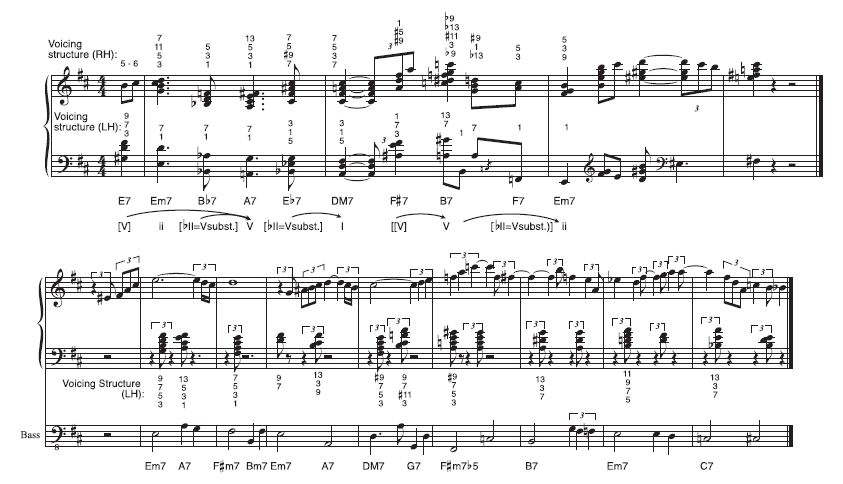
he places in the left. The left-hand triad then slides down in parallel motion to the downbeat of m. 2, but in the right the A# moves to A while the other tones remain in place. This reveals an F# minor triad comprising the third, fifth, and seventh of the DM7. The superpositions of triads and impeccable voice leading of this chord change are of a special richness in this region of the keyboard.
Shooting up in register, the F#7 chord on the second triplet eighth of m. 2, beat V is V of the B7 chord on beat 3, itself an applied V to the Em7 of m. 3. The F#7 is notable for its #9 (A) and the #5 (D), which is perhaps there only because Peterson has omitted the fifth of the chord (C# ; see also figure 4.3, middle column and second row under “Chromatic Tones”). On the next beat, where he brings the melody to a local peak, the fifth (F#) is again omitted, but both thirteenth (G#) and b thirteenth (G) are included. This B7, voiced with the root as an afterbeat, contains additional extension tones C and F that, combined with the others, conceal G# major, F major, C minor, and A diminished triads all at once. This sequence of lavish chords, texturally full and smooth, steady and propelled in rhythm and with a legato touch, give ISC sumptuous treatment.
Evans’s bass player Chuck Israels provides all the chord roots in metrically secure positions, so rather than double them or their rhythm, the pianist parries them with the left hand, playing deft offbeat rhythmic punches that converse polyrhythmically with the right hand’s intricate embellishment of the melody. Beyond this, however, Evan’s chord structures are similar to, albeit thinner than, Peterson’s. He remains in the piano’s central register, and he is equally fastidious about voice leading: the majority of the chord-to-chord connections proceed by step.
The elegantly contoured right-hand line begins by hugging the original tune, but transforms it completely after m. 4 (while still brushing the original C, B, and A in mm. 5-7). Evans sometimes uses melody to enrich the voicings, as when A–F# –D (thirteenth, #eleventh, ninth) is heard over the C7 chord in m. 8. He also gingerly clashes with them by using avoid tones, as with the F (#7) over the F#7b5 in m. 4, or the Eb similarly related to its Em7 harmony two measures later (see figure 4.3, left column and top row under “Chromatic Tones”). In both cases, though, Evans is careful to promptly lead by step to a more consonant resolution: the former moves up to F# at the end of the measure, while the latter goes directly down to D.
As we take up analysis of Monk’s ISC, we will find that features creating continuity in these two short excerpts—stepwise motion, propulsive rhythm, mid-range voicing, and a consistent level of density and dissonance—are missing. Monk did not by any means invent the notion of favoring discontinuities in these parameters. He did not come from nowhere, and it is well established that his style is part of a lineage extending from before Duke Ellington, through Monk, and on to later figures like avantgardist Cecil Taylor, not to mention the many who deliberately emulated Monk in recent decades. To hear those connections is a project for another time that would enable a crucial historical and stylistic narrative. But to frame Monk against the prevailing, more conventionally tasteful modern jazz aesthetics illustrated by figure 4.4 is to hear him at his most inimitable and strange.

Find and download Thelonious Monk’s sheet music transcriptions in our Library.
Thelonious Monk With John Coltrane (1961) (Full Album)
Browse in the Library:
| Artist or Composer / Score name | Cover | List of Contents |
|---|---|---|
| ABRSM Piano Exam 2023-24 Grade 3 C3 THE ENTERTAINER – SCOTT JOPLIN |
 |
|
| ABRSM Piano Exam 2023-24 In The Groove by Mike Cornick |
 |
|
| ABRSM Piano Exam 2023-24 Indigo Moon by Elissa Milne |
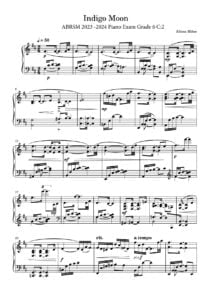 |
|
| ABRSM Piano Exam 2023-24 Jester’s Jig by Chee-Hwa Tan |
 |
|
| ABRSM Piano Exam 2023-24 Love Theme by Catherine Rollin |
 |
|
| ABRSM Piano Exam 2023-24 Minuet In G (Anonymous) |
 |
|
| ABRSM Piano Exam 2023-24 The Song Of Twilight by Yoshinao Nakada |
 |
|
| ABRSM Piano Exam Pieces Grade 1 2013 & 2014 syllabus |
 |
ABRSM Piano Exam Pieces Grade 1 2013 & 2014 syllabus |
| ABRSM Piano Exam Pieces Grade 1 2023 2024 |
 |
ABRSM Piano Exam Pieces Grade 1 2023 2024 |
| ABRSM Piano Exam Pieces Grade 1 2025 2026 |
 |
ABRSM Piano Exam Pieces Grade 1 2025 2026 |
| ABRSM Piano Exam Pieces Grade 2 2023 2024 |
 |
ABRSM Piano Exam Pieces Grade 2 2023 2024 |
| ABRSM Piano Exam Pieces Grade 3 2013 2014 |
 |
|
| ABRSM Piano Exam Pieces Grade 3 2023 2024 |
 |
ABRSM Piano Exam Pieces Grade 3 2023 2024 |
| ABRSM Piano Exam Pieces Grade 3 2025 2026 |
 |
ABRSM Piano Exam Pieces Grade 3 2025 2026 |
| ABRSM Piano Exam Pieces Grade 4 2021 2022 |
 |
ABRSM Piano Exam Pieces Grade 4 2021 2022 |
| ABRSM Piano Exam Pieces Grade 4 2023 2024 |
 |
|
| ABRSM Piano Exam Pieces Grade 5 2023 2024 |
 |
ABRSM Piano Exam Pieces Grade 5 2023 2024 |
| ABRSM Piano Exam Pieces Grade 6 2023 2024 |
 |
ABRSM Piano Exam Pieces Grade 6 2023 2024 |
| ABRSM Piano Exam Pieces Grade 7 2023 2024 |
 |
ABRSM Piano Exam Pieces Grade 7 2023 2024 |
| ABRSM Piano Exam Pieces Grade 8 2023 2024 |
 |
ABRSM Piano Exam Pieces Grade 8 2023 2024 |
| ABRSM Piano Exam Pieces Grade 8 2025 2026 |
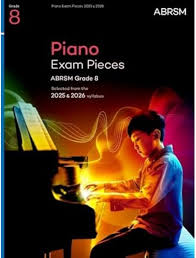 |
ABRSM Piano Exam Pieces Grade 8 2025 2026 |
| ABRSM Piano Mix 3 for Easy Piano Grades 3-4 |
 |
ABRSM Piano Mix 3 for Easy Piano Grades 3-4 |
| ABRSM Piano Prep Test |
 |
|
| ABRSM Piano Scales And Arpeggios from 2021 Guide For Practical Grades |
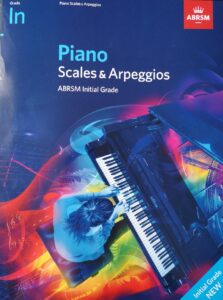 |
|
| ABRSM Selected Piano Exam 2011 2012 Grade 1 |
 |
|
| ABRSM Selected Piano Exam Grade 2 (2011 2012 ) |
 |
|
| ABRSM Specimen Aural Tests Grade 1 to 3 |
 |
|
| ABRSM Specimen Aural Tests Grade 4 & 5 |
 |
|
| ABRSM Teaching notes on piano exam pieces (2013 & 2014) |
 |
|
| ABRSM The Manual Of Scales Broken Chords And Arpeggios For Piano |
 |
|
| ABRSM Theory of Music Exams Grade 8 (The Associated Board of Royal Schools of Music) 2010 |
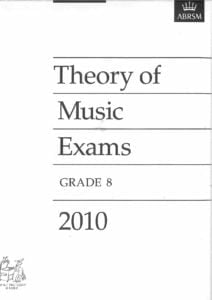 |
|
| AC/DC – Classic – Early Years – High Voltage And Let There Be Rock (Guitar Tab Songbook) |
 |
ACDC – Classic – Early Years – High Voltage And Let There Be Rock |
| AC/DC – Jam With AC/DC (PDF with MP3 audio tracks Guitar Tab Songbook) |
 |
Jam With ACDC |
| AC/DC Rock Score |
 |
|
| AC/DC, Best of (Guitar & Tablature) |
 |
Best Of ACDC (Guitar) |
| Ace Of Base – Beautiful Life | ||
| Ace Of Base – Dont Turn Around | ||
| Ace Of Base – Living In Danger | ||
| Acoustic 33 TOP Guitar Hits (Guitar Songbook) with Tablature – sheet music |
 |
Acoustic 33 TOP Guitar Hits (Guitar Songbook) – sheet music |
| Acoustic Blues Guitar By Kenny Sultan Guitar Tab |
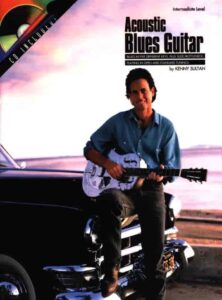 |
Acoustic Blues Guitar |
| Acoustic Blues Guitar Keith Wyatt with TABs |
 |
Acoustic Blues Guitar Keith Wyatt with TABs |
| Acoustic Blues Guitar Styles (Larry Sandberg) (with Tablature) |
 |
Acoustic Blues Guitar Styles (Larry Sandberg) |
| Acoustic Classics 42 songs Piano Vocal Guitar |
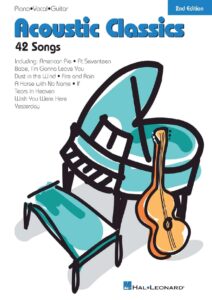 |
Acoustic Classics 42 songs Piano Vocal Guitar |
| Acoustic Guitar Bible (35 great songs) Guitar with TABs |
 |
Acoustic Guitar Bible (35 great songs) Guitar with TABs |
| Acoustic Rock (Guitar) Rolling Stones, Green Day, Pink Floyd, Bob Dylan (Songbook Guitar Tab) with Tablature |
 |
|
| Acoustic Rock 90’s, Best of – Guitar with Tablature |
 |
Acoustic Rock 90’s, Best of – Guitar |
| Acqua azzurra acqua chiara (Battisti) | ||
| Ad Te Levavi (Musescore File).mscz | ||
| Adagio (Lara Fabian) | ||
| Adagio MP3.zip | ||
| Adah’s Theme (La femme avec les yeux lumineux) Sex and the City |
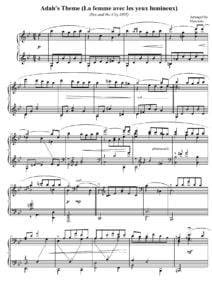 |
|
| Adah’s Theme (Le femme avec les yeux lumineux) Sex and the Cit | ||
| Adam – Adolphe Charles Holy Night Cantique-Nöel |
 |
|
| Adam – Cantique de Nöel Minuit Chretiens | Adam – Cantique de Noel Minuit Chretiens VS | |
| Adam – Derniers souvenirs d’un musicien |
 |
|
| Adam – O Holy Night | Adam – O Holy Night | |
| Adam – Souvenirs d’un musicien |
 |
|
| Adam (Cappeau) – Cantique de Noël. Easy Piano with voice or instrument (Paroles and lyrics) |
 |
Adam-Cappeau-Cantique-de-Noel- |
| Adam (Cappeau) – Cantique de Noel. Easy Piano with voice or instrument.mscz | ||
| Adam Cantique de Nöel Christmas song | Adam Cantique de noel | |
| Adam Carse – The History Of Orchestration Adam Carse |
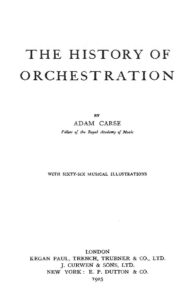 |
|
| Addams Family Theme (Musescore File).mscz | ||
| Addams Family Theme (Easy Piano) |
 |
|
| Addio Colonnello (Ennio Morricone) | ||
| Adele Songs from the Album 21 For SATB, SSA and Piano |
 |
Adele Songs from the Album 21 |
| Adele – 21 |
 |
ADELE 21 SONGBOOK |
| Adele – Chasing Pavements Piano Vocal guitar chords |
 |
|
| Adele – Easy on me (Piano solo with lyrics) |
 |
|
| Adele – Rolling in the Deep |
 |
|
| Adele – Rumor Has It |
 |
|
| Adele – Set Fire to the Rain |
 |
|
| Adele – Set Fire To The Rain (2) (Musescore File).mscz | ||
| Adele – Someone Like You | Adele – Someone Like You | |
| Adele – Someone Like You easy piano |
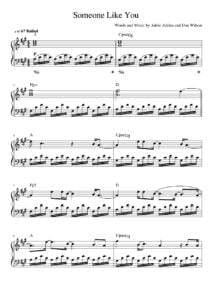 |
|
| Adele – The Best Of SongBook (12 songs arranged for easy piano) |
 |
Adele – The Best Of SongBook (12 songs arranged for easy piano) |
| Adele 19 [Piano, Guitar, Vocals] |
 |
Adele 19 [Piano, Guitar, Vocals] |
| Adele 25 Songbook |
 |
Adele 25 Songbook Contents —  |
| Adele Best Of Adele Big Note Piano (Adele Adkins) |
 |
Adele Best Of Adele Big Note Piano (Adele Adkins) |
| Adele Easy On Me Sheet Music |
 |
|
| Adele Original Keys For Singers (Adele) |
 |
Adele Original Keys For Singers (Adele) |
| Adele Skyfall (Piano Vocal Guitar Chords) | Adele Skyfall (Piano Vocal Guitar Chords) | |
| Adios Amor – Goodbye My Love as recorded by José Feliciano |
 |
|
| Adult All In One Course Level 1 With Audio Mp3 (Willard Palmer) |
 |
Lessons Alfred’s Basic Adult Piano Course Level 1 |
| Adult All In One Course Level 2 With Audio Mp3 (Willard Palmer) |
 |
Willard Palmer – Adult All-In-One Course Level 2 |
| Adult Greatest Movie Hits Piano Level 1 |
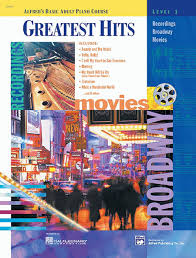 |
Adult Greatest Movie Hits Piano Level 1 |
| Adult Piano Adventures ALL-IN-ONE PIANO COURSE 1 |
 |
|
| Adult Piano Adventures All-In-One Piano Course Book 2 Book With Media Online (Nancy Faber, Randall Faber) Sheet Music |
 |
|
| Adult Piano Adventures Christmas – Book 1 (Nancy Faber Randall Faber) |
 |
|
| Adult Piano Adventures Christmas – Book 2 |
 |
Adult Piano Adventures Christmas – Book 2 |
| Adult Piano Adventures Popular Book 1 – Timeless Hits and Popular Favorites (Adult Piano Adventures Popular) |
 |
Adult Piano Adventures Popular Book 1 – Timeless Hits and Popular Favorites (Adult Piano Adventures Popular) |
| Adult Piano Course Greatest Movie Hits Piano Level 1 Recordings Broadway Movies |
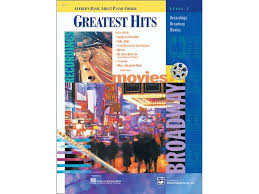 |
Adult Piano Course Greatest Movie Hits Piano Level 1 Recordings Broadway Movies |
| Advanced Harmonic Concepts by Wayne Naus (with audio MP3) |
 |
Advanced Harmonic Concepts by Wayne Naus |
| Advanced Harmonic Exercises For Jazz Piano |
 |
advanced harmonic exercises |
| Advanced Piano Solos 1 Encyclopedia by Tom Roed |
 |
Advanced Piano Solos 1 Encyclopedia by Tom Roed |
| Advanced Piano Solos 2 Complete by Tom Roed |
 |
Advanced Piano Solos 2 Complete by Tom Roed |
| Advanced Sacred Music Piano Solos by John Kraus |
 |
|
| Advanced Scale Concepts and Licks for Guitar (PDF + MP3 audio tracks Play Along) with Tablature |
 |
 |
| Aebersold – 110 – When I fall In Love – Romantic Ballads pdf with embedded audio MP3 Tracks |
 |
Jazz Play Along Vol 110 [When i Fall in Love] |
| Aebersold – 113 Embraceable You – Vocal Standards with audio MP3 Tracks |
 |
Jamey Aebersold – Vol 113 |
| Aebersold – 30 blues scale By Jamey Aebersold | Aebersold – 30 blues scale By Jamey Aebersold | |
| Aebersold – A New Approach To Jazz Improvisation Gettin’it together vol. 21 |
 |
aebersold gettin all together vol 21 |
| Aebersold – Practice Procedures For Memorizing Scales And Chords | Aebersold – Practice Procedures For Memorizing Scales And Chords | |
| Aebersold – Rapid Reference Vol 1-114 | Aebersold – Rapid Reference Vol 1-114 | |
| Aebersold – Vol 01 – How to Play and Improvise Jazz (with audio MP3) |
 |
Aebersold – Vol 01 – How to Play and Improvise Jazz |
| Aebersold – Vol 03 – The II-V7-I Progression Jazz Play Along Book + Audio Mp3 |
 |
|
| Aebersold – Vol 105 – Dave Brubeck Jazz Play Along Book + Audio Mp3 |
 |
|
| Aebersold – Vol 118 – [Groovin Jazz] (with audio MP3) |
 |
|
| Aebersold – Vol 32 – Ballads Jazz Play Along Book + Audio Mp3 |
 |
|
| Aebersold – Vol 34 – Jam Session Jazz Play Along Book + Audio Mp3 |
 |
Includes MP3 Play along themes as Blue moon, The shadow of your smile, Over the rainbow, etc. |
| Aebersold – Vol 45 – [Bill Evans] Jazz Play Along Book + Audio Mp3 |
 |
Aebersold – Vol 45 – [Bill Evans] |
| Aebersold – Vol 58 – Unforgettable Standards Jazz Play Along Book + Audio Mp3 |
 |
aebersold unforgettable standards sheet music |
| Aebersold – Vol 76 – David Baker – How To Learn Tunes (A Jazz Musician’s Survival Guide) |
 |
how to learn tunes |
| Aebersold 25 How To Practice By Jamey Aebersold | Aebersold 25 | |
| Aebersold Antonio Carlos Jobim Vol 98 – Bossa Nova Songbook Jazz Play Along Book + Audio Mp3 |
 |
Aebersold Antonio Carlos Jobim Vol 98 – Bossa Nova Songbook |
| Aebersold Anyone Can Improvise – 52 Points To Remember | Aebersold Anyone Can Improvise – 52 Points To Remember | |
| Aebersold Jazz EAR training (with audio MP3) |
 |
Aebersold Jazz EAR train |
| Aebersold Jazz Handbook 09 Tips For Learning A New Tune & Practice Procedures For Memorizing |
 |
Aebersold Jazz HANDBOOK |
| Aebersold Jazz Play-Along Books & audio MP3 1st Part Full Collection – Vol 1- 40 (with MP3) for all instruments |
Compressed file  Aebersold Full Collection Part 1 – Vol 1- 40 Aebersold Full Collection Part 1 – Vol 1- 40 |
40 volumes with MP3 Aebersold Book Index Vol.001-106 |
| Aebersold Jazz Play-Along Books & audio MP3 2nd Part Full collection Vol 41- 75 for all instruments | Compressed fileAebersold Full Collection Part 2 – Vol 41- 75.. | 35 volumes with MP3 Aebersold Book Index Vol.001-106 |
| Aebersold Jazz Play-Along Books & audio MP3 3rd Part Full Collection – Vol 76- 112 (with MP3) | Compressed fileAebersold Full Collection Part 3 – Vol 76- 112 | 37 volumes with MP3 Aebersold Book Index Vol.001-106 |
Alto Saxophone – Gigi Gryce (# A3, B2)…. Bass – Wilbur Ware (# A1 to B2)…. Drums – Art Blakey (#A3, B2), “Shadow” Wilson (#A1, A2, B1)…. Piano – Thelonious Monk…. Tenor Saxophone – Coleman Hawkins (# A3, B2), John Coltrane…. Trumpet – Ray Copeland (# A3, B2)…. ……………………………………………… A1 Ruby, My Dear 0:00 A2 Trinkle, Tinkle 6:22 A3 Off Minor 13:03 B1 Nutty 18:19 B2 Epistrophy 24:58 B3 Functional 28:09 ……………………………………………… Recorded – New York; 1957-58.
